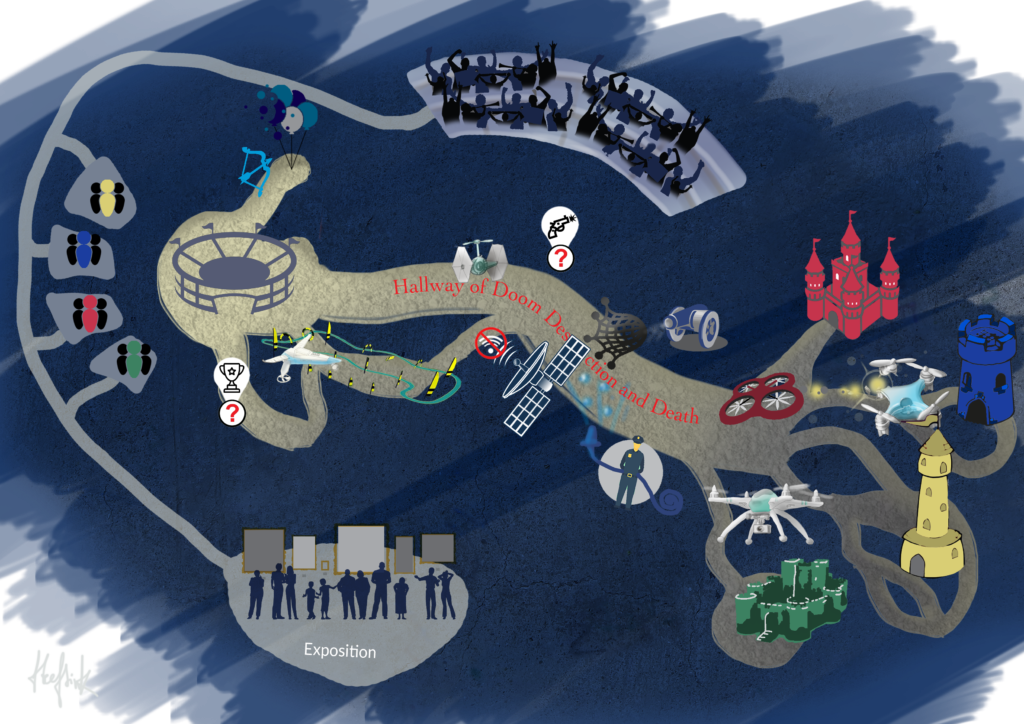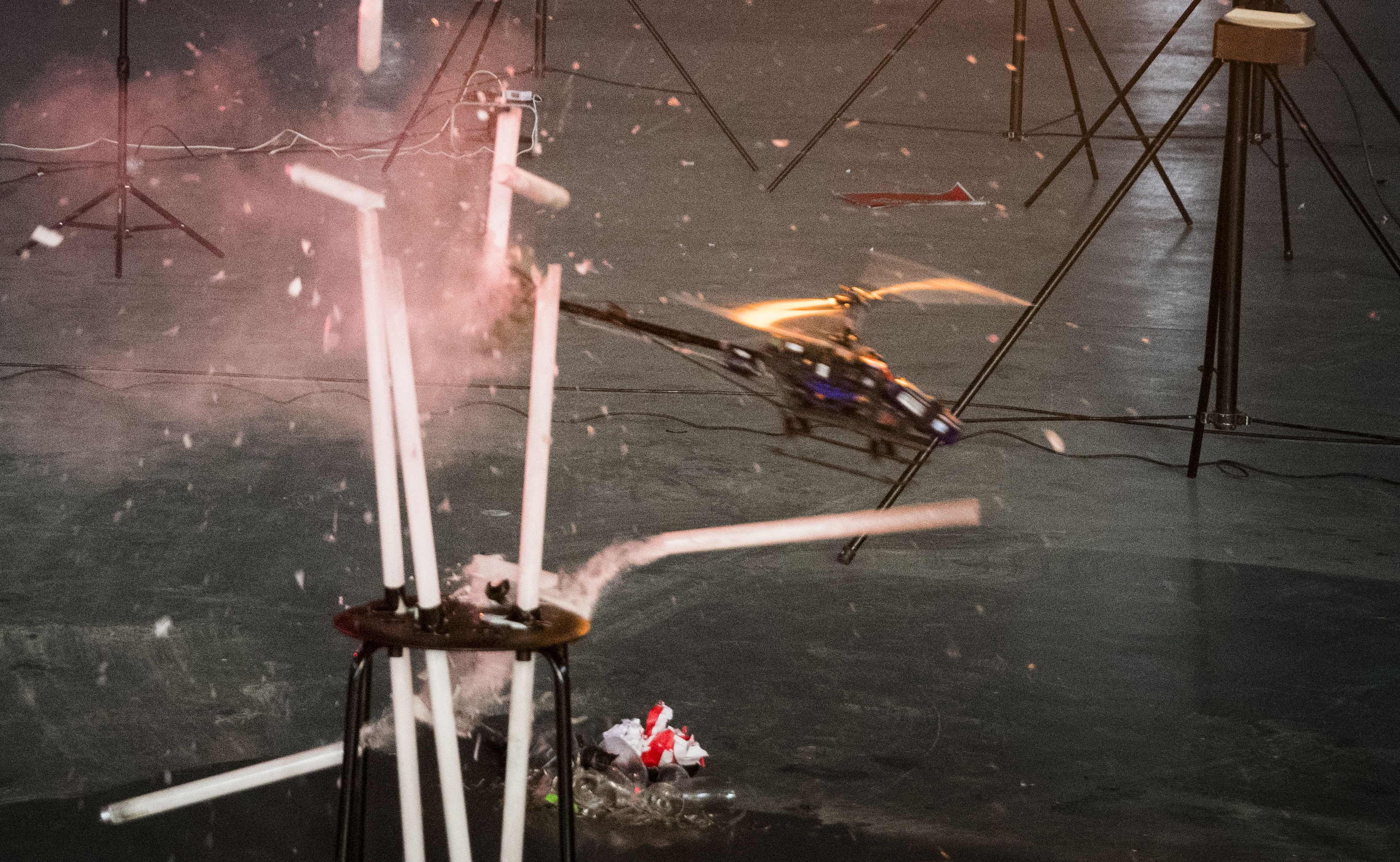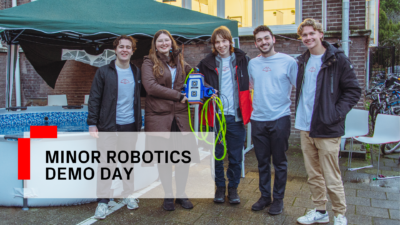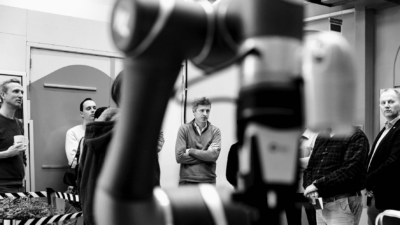The first edition of the anti-drone competition DroneClash promises to be a spectacular event. In a hangar at a former air base nearby The Hague, drones will fly through the Hall of Doom Destruction and Death, trying to protect their Queen Drone and to take out the other, hostile queens. It will be like a 3D Robot Wars. But apart from a great show and lots of fun, DroneClash serves a scientific goal: to stimulate research on counter-drone technology.
“We still lack an integrated solution for counter-drone measures”, Bart Remes tells. Remes is a researcher from the Micro Air Vehicle Lab (MAVLab) of Delft University of Technology, that organises the event. “To successfully take out drones from the sky, you need to develop technology that can detect possible threats, classify those threats and eliminate them in a safe way.”

Creative solutions
Not a lot of research is being done on counter-drone technology. Companies are working on it, but they are trying to solve a part of the problem. “For example, Robin Radar Systems is very good in detecting other drones, but has no solution for taking it down to the ground in an efficient way”, Remes says. Delft Dynamics on the other hand, developed a system to grab drones out of the sky, but still lacks the detection and classification.
“There aren’t any companies yet that provide an integrated solution”, Remes tells. By organising DroneClash he hopes to stimulate the research. A total of eight international teams compete in the event. “I can’t disclose too much yet, but they have come up with very creative solutions.” Combined, those teams will provide a lot of valuable academic insights. A total of 50 thousand euros is what the winners can gain.
Remes and his team steer the direction of the research by the way the competition has been set up. For example, teams that grab enemy drones and put them safely in a box score more points than teams that just knocks them out of the air. “In this way, we ensure the focus is on counter-drone measures that are safe.”
Why counter-drone technology is important
The main reason the MAVLab organises this event is a societal one. “At the MAVLab we conduct a lot of research on drones”, Remes says. “We believe they will be strongly integrated in society. Think of drones that deliver packages, drones that inspect the land of farmers. All these kinds of drones will show up.”
“But in order to make sure that society accepts drones flying around, we must ensure there will be places where drones aren’t allowed”, he continues. For example, when a building is on fire, you don’t want any drones flying around so to make sure a police or ambulance helicopter can land safely. Or think of airports: you don’t want drones flying around planes that take off or land. That’s why you need counter-drone technology.

Counter-drone coalition
To achieve this it is important to involve other stakeholders as well. Remes set up a ‘counter-drone coalition’, in which government agencies, companies and end-users come together to discuss current developments on drones. DroneClash is part of this agenda. The ministry of Justice and Security is a partner of the event, as well as the National Police.
ClashExpo
On a corporate level, the number of companies working on counter-drone technology is ‘exploding’, Remes says. Not without reason, DroneClash is a side event of TUS Expo and visitors can visit the ClashExpo as well, where companies will showcase their latest anti-drone measures and give live demos.
The MAVLab does not yet do fundamental research on counter-drone technology. Remes hopes to get funding for it out of DroneClash. “We already do a lot of research on ‘sense and avoid’, whereby drones have to fly around obstacles”, he states. “Basically, counter-drone technology is reversing this: instead of avoiding obstacles you try to grab them.”
Unmanned Valley Valkenburg
DroneClash and the ClashExpo take place at Unmanned Valley Valkenburg. This former air base near The Hague is currently being transformed into a testing ground for drones and unmanned vehicles.



